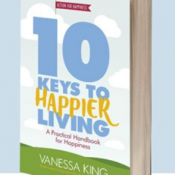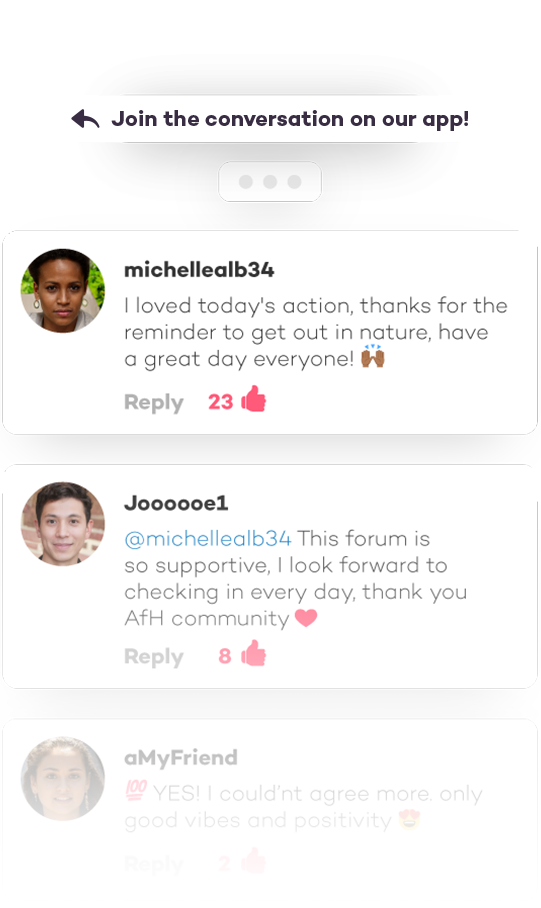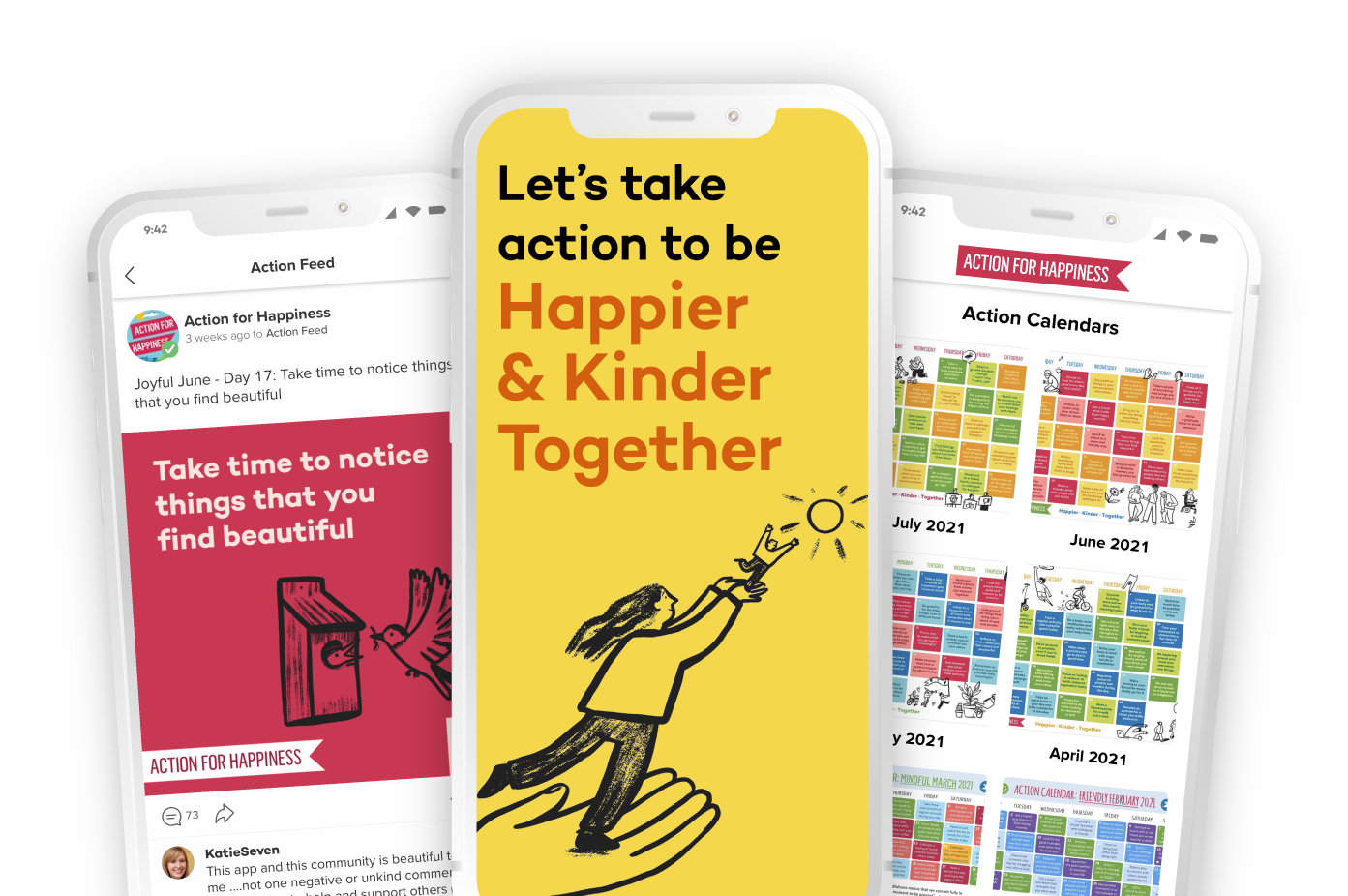Emotions
Look for what's good
The positive power of pleasant emotions. They don’t just feel good; they bring positive benefits.
Emotions are more than feelings. They include momentary physiological changes which influence our actions and add up. Whilst unpleasant emotions like fear evolved to help us survive by avoiding danger, for example, by triggering a ‘fight, flight or freeze response, it wasn’t until relatively recently that the power of pleasant emotional experiences was also recognised.
Scientist Barbara Fredrickson and her colleagues found that fleeting momentary experiences of pleasant emotions broaden our perceptual fields, causing us to literally see more; to be more open and trusting of others; recognise people from other cultures better; see more options; be more open to ideas; more likely to adapt, and be better at creative problem-solving. Little by little, these moments add up, over time building our psychological and social resources and our resilience for more challenging times too [1].
The human brain naturally focuses on what’s wrong
The human brain evolved to more naturally focus on what's wrong rather than what’s right [2]. At the time our human brain was evolving we were hunters and gatherers and regularly faced life or death situations. It was safer to interpret neutral or ambiguous signals around us, like a rustle in the grass or a strange sound, as a potential danger so we could act to avoid it, than to wait and see if it meant there was a predator waiting to pounce! Even though today, thankfully, such life or death moments are much rarer, our brain still responds this way, causing us to experience unpleasant emotions we don't need to, to dwell on or give more weight to things that are potentially wrong and we tend to overlook what’s good or gone well. This phenomenon is known as 'negativity bias'.


Training our brain to look for what’s good
We can train our brain to look for the good around us, increasing the number of pleasant emotional moments we experience so over time we benefit from the ‘broaden and build’ effect outlined above. This doesn’t mean ignoring what’s wrong, but noticing what’s right. For example, studies show that simply reflecting and writing down three good things we experienced over the course of the day (however small), for seven days, boosted how happy people felt and reduced feeling down, and this impact lasted as long as six months! [3]
Try it: Each night for one week, think back over your day. Identify three things you enjoyed, were pleased about or grateful for (however small) and write these down, perhaps with a few words on why these felt good for you. The good things you can be small or day-to-day - like getting a seat on the bus, the sun coming out, or being able to take a quick break on a tough day [4]. After a week see what you notice. If you keep this practice up you might also notice themes in what you most often find pleasurable in some way.
Buffering and bolstering effects of pleasant emotions
Pleasant emotions aren’t only for good days – they can help us in the midst of tough times and challenges too, potentially increasing our resourcefulness and contributing to coping. It’s thought experiencing moments of pleasant emotions at such times can help buffer the detrimental effects difficulties can have on our psychological health. It might also have a bolstering effect, helping us to maintain our wellbeing at times of crisis and challenge, such as during the recent pandemic [5]. Studies show the experience of pleasant emotions can help undo the potential damage chronic exposure to stress can have in our brains [6].
Clinical psychologist Dr Maria Sirois advises that even on the very toughest of days, we can find a 'best moment', even if these are just the least bad [7].
Try it: Next time you are experiencing a tough patch, each night before you go to sleep, reflect back over the day and find a best moment (even if that’s just the least bad).


Gratitude
Gratitude is a pleasant emotion that’s a firm foundation for happiness. It arises from recognising what we have or what we have received and, as a result, feeling thankful and appreciative. Experiencing gratitude has been shown to boost: happiness, optimism, resilience and physical health, reduce materialism and makes it less likely we’ll feel lonely [8].
Gratitude connects us to others and the world around us, benefiting our relationships and communities. When we experience gratitude we are more likely to be kind, generous and compassionate to others and initiate social contact. It can help nurture our existing relationships by making others feel appreciated and fostering trust [9]. It can have a ripple effect too - when we observe other people being thanked, it increases our motivation to connect with and help others! [10]
Whilst we may vary in the degree to which we have a naturally grateful orientation, importantly, studies show we can cultivate a greater attitude of gratitude! [11]
Try it: Each night for the next week, reflect on three good things that happened as a result of other people, write these down in the form of: I’m grateful to___________for____________ [12]
Cultivating pleasant emotions
There are many different pleasant emotions. In addition to gratitude, some of the most commonly experienced are joy, serenity, contentment, curiosity or interest, hope, pride, amusement, inspiration, awe and love [13]. We’ve touched on ways to cultivate some of these in our other Keys. So how can we make the most of any of our pleasant experiences?
‘Savouring’ is the practice of actively paying attention to, appreciating and intentionally enhancing our positive experiences. It’s a mindful process combined with actively seeking to amplify or prolong pleasant emotional experiences [14]. It involves noticing our sensations, perceptions, thoughts, behaviours, and emotions whilst enjoying and appreciating a positive experience [15].
Savouring helps us make the most of our experience in the moment, connecting it to pleasant emotions and anchoring both in our memory [16]. In addition to boosting positive emotions, savouring has been shown to predict life satisfaction, help us feel more in control, reduce depressive symptoms and feel we have a better work-life balance [17]. We can also savour retrospectively by vividly recalling and reminiscing about past positive experiences, and prospectively by reflecting on things we are looking forward to [18].
Try it: Here are two savouring activities that studies have shown can boost happiness
Savouring the Past - Bring to mind one of your happiest ever days. Each day for three consecutive days, spend 8 minutes privately replaying it in your mind in as much detail as you can: where you were, what happened, who you were with, what you and other people did; what thoughts and emotions were running through your head at that time. Don’t analyse it, just revel in the memory of it [19].
Savouring the Present - Go for a 20-minute walk in which you try to notice as many positive things around you as possible, for example, trees, flowers or animals, the weather, other people. As you notice each thing, identify what it is about it that makes it pleasurable for you and any thoughts, feelings or sensations as a result.* [20]
* You can try noticing and exploring other pleasant emotional experiences in this way too.


Can there be an upside to unpleasant emotions?
Harnessing the positive power of pleasant emotions doesn’t mean we’ll never experience unpleasant emotions. Whilst these might not feel good at the time, they can also serve a purpose or even have an upside [21]. For example, fear (as we’ve seen) helps us escape danger; sadness signals we’ve lost someone or something meaningful for us; anger can enable us to address violations or injustices to ourselves or others; guilt signals we’ve done something wrong and can serve to reduce the likelihood of us doing it again. What’s important is that the emotion we feel is appropriate for, and in proportion to, the situation. Sometimes inaccurate thinking can cause us to feel unpleasant emotions inappropriately or excessively or to get stuck in them, undermining our resilience and causing us to feel bad unnecessarily. However, we can learn to recognise and manage unhelpful thinking, which can help us to better regulate how we feel and respond. Cultivating resilience can also help us develop these skills.
Reflection: Think of a time when experiencing an unpleasant emotion had an up-side for you. What was the up-side and how did it help?
References
1 Fredrickson, B. L. (2013), Positive emotions broaden and build. Advances in experimental social
psychology (vol. 47, 1–53), Academic Press
2 Baumeister, R. F., Bratslavsky, E., Finkenauer, C., & Vohs, K. D. (2001). Bad is stronger than good. Review of general psychology, 5(4), 323-370.
3 Seligman, M. E., Steen, T. A., Park, N., and Peterson, C. (2005), Positive psychology progress: empirical validation of interventions. American Psychologist, 60(5), 410
4 Seligman, M. E., Steen, T. A., Park, N., and Peterson, C. (2005), Positive psychology progress: empirical validation of interventions. American Psychologist, 60(5), 410
5 Waters, L., Algoe, S. B., Dutton, J., Emmons, R., Fredrickson, B. L., Heaphy, E., Moskowitz, J.T., Neff, K., Niemiec, R., Pury, C., & Steger, M. (2021), Positive psychology in a pandemic: buffering, bolstering, and building mental health. The Journal of Positive Psychology, 1–21; Fredrickson, B. L. (2013), Positive emotions broaden and build. Advances in experimental social psychology (vol. 47, 1–53), Academic Press
6 Fredrickson, B. L. (2013), Positive emotions broaden and build. Advances in experimental social psychology (vol. 47, 1–53), Academic Press
7 Sirois, M. (2019, 2020). Action for Happiness Event. https://www.youtube.com/watch?v=QLK0ghcXYhU&t=2518s and https://www.youtube.com/watch?v=AnDVwGxMTto
8 Sources include:
- Emmons, R. A., & Mishra, A. (2011). Why gratitude enhances well-being: What we know, what we need to know. Designing positive psychology: Taking stock and moving forward, 248-262.
- Allen, S. (2018). The science of gratitude. John Templeton Foundation.
- Jans-Beken, L., Jacobs, N., Janssens, M., Peeters, S., Reijnders, J., Lechner, L., & Lataster, J. (2020). Gratitude and health: An updated review. The Journal of Positive Psychology, 15(6), 743-782.
- Rippstein-Leuenberger, K., Mauthner, O., Sexton, J. B., & Schwendimann, R. (2017). A qualitative analysis of the Three Good Things intervention in healthcare workers. BMJ Open, 7(5),
- Sirois, F. M., & Wood, A. M. (2017). Gratitude uniquely predicts lower depression in chronic illness populations: A longitudinal study of inflammatory bowel disease and arthritis. Health Psychology, 36(2), 122.
- Wood, A. M., Froh, J. J., and Geraghty, A. W. (2010), Gratitude and well-being: A review and theoretical integration. Clinical Psychology Review. 30(7), 890–905
- Waters, L., Algoe, S. B., Dutton, J., Emmons, R., Fredrickson, B. L., Heaphy, E., Moskowitz, J.T., Neff, K., Niemiec, R., Pury, C., & Steger, M. (2021), Positive psychology in a pandemic: buffering, bolstering, and building mental health. The Journal of Positive Psychology, 1–21
9 Algoe, S. B. (2019), Positive interpersonal processes, Current Directions in Psychological
Science, 28(2), 183–188; Algoe, S. B. (2012). Find, remind, and bind: The functions of gratitude in
everyday relationships. Social and Personality Psychology Compass, 6(6), 455-469.
10 Jung, H., Seo, E., Han, E., Henderson, M. D., and Patall, E. A. (2020), “Prosocial modeling: A meta- analytic review and synthesis,” Psychological Bulletin, 146(8), 635; Algoe, S. B., Dwyer, P. C., Younge, A., and Oveis, C. (2020), A new perspective on the social functions of emotions: Gratitude and the witnessing effect, Journal of Personality and Social Psychology, 119(1), 40
11 Lamas, T., Froh, J. J., Emmons, R. A., Mishra, A., & Bono, G. (2014). Gratitude interventions: A review and future agenda.
12 Emmons, R. A. (2013). Gratitude works!: A 21-day program for creating emotional prosperity. John Wiley & Sons.
13 Fredrickson, B. L. (2013), Positive emotions broaden and build. Advances in experimental social psychology (vol. 47, 1–53), Academic Press
14 Smith, J. L., Harrison, P. R., Kurtz, J. L., & Bryant, F. B. (2014). Interventions to Enhance the Enjoyment of Positive Experiences. The Wiley Blackwell handbook of positive psychological interventions, 42.
15 Smith, J. L., Harrison, P. R., Kurtz, J. L., & Bryant, F. B. (2014). Interventions to Enhance the Enjoyment of Positive Experiences. The Wiley Blackwell handbook of positive psychological interventions, 42.
16 Smith, J., & Bryant, F. (2017). Savoring and well-being: Mapping the cognitive-emotional terrain of the happy mind. In M. D. Robinson & M. Eid (Eds.), The happy mind: Cognitive contributions to well- being (pp. 139–156). Cham: Springer
17 Smith, J., & Bryant, F. (2017). Savoring and well-being: Mapping the cognitive-emotional terrain of the happy mind. In M. D. Robinson & M. Eid (Eds.), The happy mind: Cognitive contributions to well- being (pp. 139–156). Cham: Springer
18 Smith, J. L., Harrison, P. R., Kurtz, J. L., & Bryant, F. B. (2014). Interventions to Enhance the Enjoyment of Positive Experiences. The Wiley Blackwell handbook of positive psychological interventions, 42.
19 Based on: Lyubomirsky, S., Sousa, L., & Dickerhoof, R. (2006). The costs and benefits of writing, talking, and thinking about life's triumphs and defeats. Journal of personality and social psychology, 90(4), 692.
20 Based on: Bryant, F. B., & Veroff, J. (2007). Savoring: A new model of positive experience (pp. 184–185). Mahwah, NJ: Erlbaum Associates.
21 Kashdan, T. B., & Biswas-Diener, R. (2014). The upside of your dark side: Why being your whole self--not just your good self-drives success and fulfilment. Penguin.


Take the 10 Keys to Happier Living online coaching programme.









